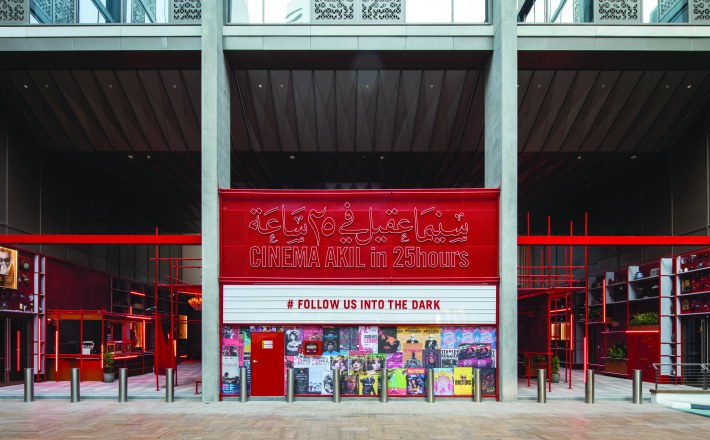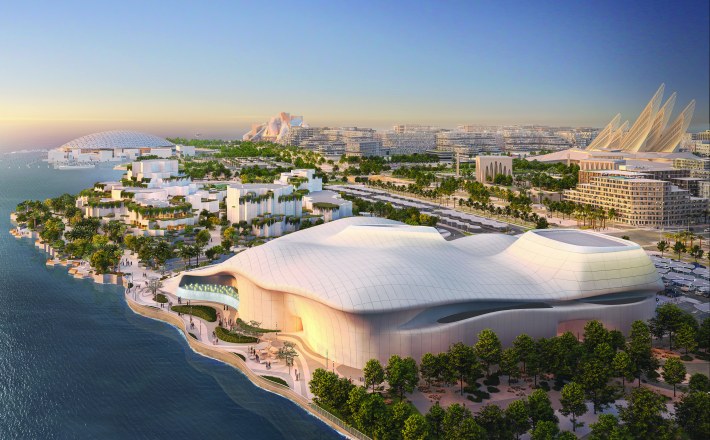Sex and the City
Cities are often anything but neutral spaces and are historically laid out with men in mind. Gwen Defoe looks at innovative and exciting ways in which pioneers in their fields are redressing the urban gender imbalance

If you’re reading this on a bus or bench in a city, or reasonably sized town, take a look around you—what do you see? High-rise, glass and steel buildings, perhaps, graffitied billboards, the glare of sunlight reflecting off lines of slow-moving cars—concrete jungle where dreams are made of. Cities are collages of human endeavour and survival and represent a certain sort of freedom and sense of possibilities; and while they may seem chaotic and organic, like a circuit board they are all connected with systems of zoning, or urban planning. But while cities are often poetically cast as females–Venice, for example, famously known as La Serenissima—they have almost exclusively been planned and built by men. Baron Haussmann, who created the boulevards of Paris; Robert Moses, who transformed New York into the modern city we know today. And while we may think of cities as being neutral spaces, designed equally for all residents, the truth is quite the opposite. At a time when women and their supporters are marching to reclaim the streets and make them safer spaces in the face of high-profile cases such as the murder of Sarah Everard in London, what if those very streets are designed—albeit unintentionally—to trip women up?
“Even if it’s unconscious, cities have been set up to serve men’s roles, and women’s lives and experiences have been an afterthought at best,” says academic Leslie Kern, in her book Feminist City: Claiming Space in a Man-Made World, which sets out the case for non-sexist, inclusive cities that acknowledge the lifestyles and contributions made by women. She’s just one of a growing number of voices challenging the status quo. The writer Caroline Criado Perez argues that cities are biased against women because of a “female-shaped” gender data gap—a lack of research that’s “both a cause and a consequence of the type of unthinking that conceives of humanity as almost exclusively male”, she writes in her book Invisible Women. “One of the big problems with the way we’ve laid out cities is it's been done in such a way to serve the needs of this mythical male breadwinner who has a wife at home in the suburbs.”
Cities have been laid out to serve the needs of this mythical male breadwinner who has a wife at home in the suburbs
It’s an issue that affects the way our homes are designed, and our streets are lit, the provision of public bathrooms and design of public spaces—after all, mobility and access are key to a sense of being made to feel welcome and wanted. Transport systems tend to favour the home-to-work-and-back journeys made by men, rather than the circuitous ones often made by women who need to factor in childcare and shopping. While many of our established cities are, literally, set in stone, some interventions are being made. Vienna is one of the early adopters of gender mainstreaming, an approach that ensures that women’s and men’s concerns are considered equally in all policy-making decisions. Expert Eva Kail began looking at the subject 30 years ago, realising that a “one size fits all” attitude to urban planning just didn’t work. “It was time to look at the whole city from a female perspective,” she said. Kail began by testing out new park designs to attract teenage girls, adding hammocks and dividing large spaces into smaller ones, making sure big plants weren’t too close to pathways. A social housing project was designed by female architects, built low enough to ensure “eyes upon the street”, with pram storage and wider stairwells to encourage interaction; there’s better street lighting and more benches, while on Reumannplatz, workout stations and a performance podium have been constructed following requests by local schoolgirls. Adding rails to public steps and staircases has a huge effect, meaning prams can easily be rolled up and down without having to be carried or others asked to help (and yes, men do push prams, but statistically many more women do).
Transport systems tend to favour the home-to-workand-back journeys
of men, rather than the circuitous ones made by women
As a city with its own transgender crossway, little wonder that Vienna is consistently voted top for quality of life in surveys by The Economist. “All sorts of assumptions are made about what we want, but decision makers need to ask questions and listen to the answers,” says Susannah Walker, co-founder of UK charity Make Space for Girls. “And if you ask them, girls will tell you they want larger swings, social seating so they can face each other, and trampolines. Older girls still want to play. Teenage girls know their neighbourhood very well, the dodgy footbridge and other spaces they don’t feel safe in. After all, it’s important to create autonomous spaces for young people—they’re the only places away from school and home where adults aren’t telling them what to do.”

Around Europe, cities are being slowly transformed with practical measures to help create fairer societies, with cities such as Berlin, Barcelona, Stockholm and Copenhagen drawing on gender mainstreaming to redesign public spaces. “I think the beauty of gender mainstreaming,” one Vienna resident, Helena, tells me, “is that once it’s been implemented, you don’t really notice it.”
Barcelona
Inspired by research showing that women travel more by foot and public transport than men, the city aims to develop more than 500 superilles, or superblocks, closing off sections of the city to through traffic and reclaiming space for pedestrians with parks and seating to hang out on. Elsewhere, the Punt 6, a collective of feminist architects and urban planners, is working on various projects, including public toilets large enough for prams.

Paris
The concept of the ’15-minute city’, developed during the COP21 summit by Professor Carlos Moreno (and inspired by activist Jane Jacobs, who wrote The Death and Life of Great American Cities in 1961), aims to make urban life sustainable by ensuring all residents are able to access their daily needs—from food, education, culture and health—within a short bike ride or walk. It’s been described as a “return to a local way of life” and has been embraced with enthusiasm by Paris mayor Anne Hidalgo, who is vanquishing vehicles and encouraging self-sufficient communities.

Copenhagen
Designed to be the most inclusive park in the world, the 750-metre linear Superkilen Park runs through the Nørrebo neighbourhood in the Danish capital, scattered with urban furniture from 60 different cultures—each representing a nationality living in this diverse city district. There are Spanish table-tennis tables, benches from Brazil, a slide from Chernobyl and a Thai muay thai boxing ring, as well as a Moroccan fountain and neon signs from Qatar.

Vienna
As well as gender mainstreaming, the Austrian capital has embraced corrective measures in the newly developed Seestadt Aspern district, where every street, square and park has been named after a woman—so you can wander down Janis-Joplin Promenade, cross Ada-Lovelace Straße and take the view from Zaha-Hadid Platz. Compare that to London’s Blue Plaques celebrating notable occupants of buildings, of which only 14 per cent are female.

Umea
Those wanting to see gender mainstreaming in action should hop aboard the Gendered Landscape bus tour of Umea in eastern Sweden. The city has been pioneering urban planning equality since 1977, and one of the tour’s highlights is the pedestrian underpass behind the central station, where women reported feeling unsafe, which is now wider, with better lighting, more exits and art and quotes from Swedish author Sara Lidman.

Nairobi
A newly published report by WhereIsMyTransport, working with Africa’s TUMI (Transforming Urban Mobility Initiative) seeks to fill the gender data gap by drawing on research on travel habits in Nairobi, Lagos and South Africa’s Gauteng. It looks at the issues of harassment, reasons for travel and road safety. “When travelling as a woman, using public transport is a truly audacious task,” says Zanele Mabaso, gender and policy advisor in Johannesburg. ‘The lack of safety is largely due to its operative systems being gender blind.” It’s hoped the findings will inform future decisions on city planning across the continent and create more inclusive urban hubs.





